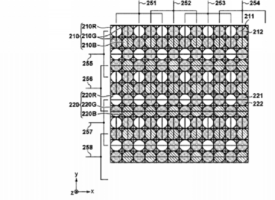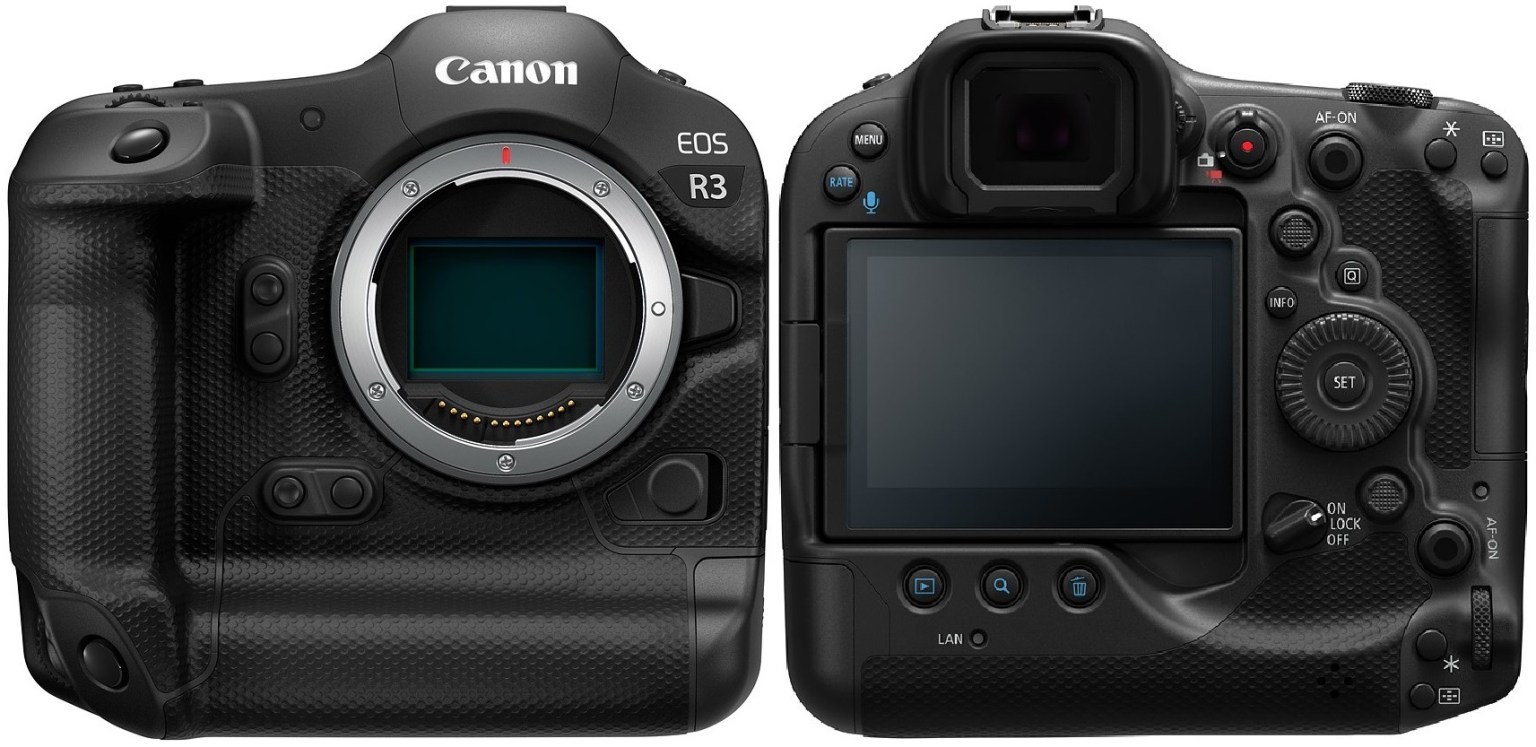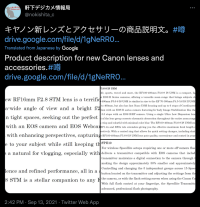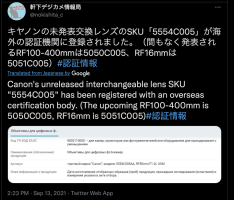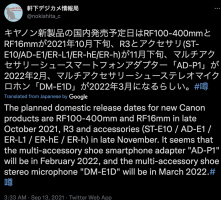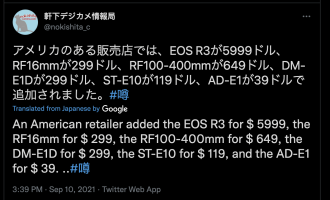For those who like the background narrative to make them feel warm and fuzzy about their purchase, Nokishita has leaked some product narratives, available here:

drive.google.com
RF16mm F2.8 STM
Compact, versatile, speedy and affordable, the new RF16mm F2.8 STM lens is a terrific complement to any
EOS R series digital camera. Offering an ultra-wide angle of view and a bright f/2.8 aperture, it’s an
excellent choice whether taking interior photos in tight spaces, seeking out the perfect landscape, or as the
perfect webcam lens when used in combination with an EOS camera and EOS Webcam Utility on a video
call. With a 16mm F2.8 lens, you can experiment with enhancing perspectives, capturing starscapes, or with
the close focusing distance of 13cm, get up close to your subject while still keeping the background more
visible. Video users will find this ultra-wide lens a natural for vlogging, especially with its supremely light
weight.
With its remarkable combination of optical excellence and refined performance, all in a small package that’s
easy to bring most anywhere, the RF16mm F2.8 STM is a stellar companion to any EOS R series digital
camera.
RF100-400mm F5.6-8 IS USM
Perfect for wildlife, sports, travel and more, the RF100-400mm F5.6-8 IS USM is a compact, lightweight
telephoto lens for EOS R Series cameras, offering a versatile zoom range that brings subjects closer with
ease. The RF100-400mm F5.6-8 IS USM is similar in size to the EF 70-300mm F4.5-5.6 IS II USM lens, but
not only reaches to 400mm, but also has fast Nano USM focusing and up to 6 stops of Coordinated IS when
used in combination with an EOS R series camera featuring In-body Image Stabilization like the EOS R5
and EOS R6, or 5.5 stops with an EOS R/RP camera. Using a single Ultra Low Dispersion lens element
towards the front of the lens group corrects chromatic aberration throughout the entire zoom range, making
your images look crisp and colorful with minimal color blur. The RF100-400mm F5.6-8 IS USM lens can also
accept both the RF1.4x and RF2x tele extenders giving you the effective maximum focal length of 560mm
and 800mm respectively. With a control ring that allows for quick setting changes, including shutter speed
and aperture, the RF100-400mm F5.6-8 IS USM lens puts quality, convenience and control in your hands.
DM-E1D
The Stereo Microphone DM-E1D is a compact microphone accessory for compatible EOS cameras that
include the multi-function shoe. The Stereo Microphone DM-E1D easily mounts to the multifunction
hotshoe creating a digital connection to the camera. This means that no internal battery or cable connecting
the mic to the camera's mic port are required, helping you utilize the mic longer and also no impediment in
using the vari-angle screen to its full range. It features a number of directional controls to suit the
environment and your shooting needs. Shotgun mode keeps audio focused on a subject directly in front of the
camera, such as when interviewing someone for a documentary. Stereo (90°/120°) mode captures audio over
a wide area for more ambient sound, ideal for nature scenes or entire orchestras. Adjusting the mic controls
is as simple as pressing the menu button on the back of the microphone and using the touchscreen LCD on
the back of the EOS camera to change settings. Whether you're looking to capture an interview, record a
concert or simply capture the sights and sounds of nature, the Stereo Microphone DM-E1D pairs
wonderfully with a compatible EOS digital camera to help you achieve impressive audio.
AD-E1
For a seamless transition from your current hot shoe accessories to the multi-function shoe, the
Multi-Function Shoe Adapter AD-E1 is the answer. The Multi-Function Shoe Adapter AD-E1 provides a
reliable connection for dust and drip proof Speedlite accessories that you may already own such as the
Speedlite EL-1, Speedlite 600EX II-RT, Speedlite 600EX-RT, Speedlite 580EX II, ST-E3-RT or OC-E3 flash
cord. The shoe adapter will also hold current accessories such as shotgun mics and on-camera LED panels
securely to the camera body with dual locking pins on the multi-function shoe side.
ST-E10
For wireless Speedlite setups requiring one or more off-camera flashes, the Speedlite Transmitter ST-E10
delivers a transmitter compatible with EOS cameras that include the multi-function shoe. Since this
transmitter maintains a digital connection to the camera through the shoe, it does not require batteries,
making the design approximately 30% smaller and approximately 50% lighter (than the ST-E3-RT II).
Controlling and changing the 5 independent groups across 15 Speedlites is as easy as pressing the menu
button located on the transmitter and adjusting the settings from the vari-angle touchscreen on the back of
the camera, or with the flash setting screen when using the Canon Camera Connect app on your smartphone.
With full flash control at your fingertips, the Speedlite Transmitter ST-E10 is an indispensable tool for
advanced, professional flash photography.
View attachment 200166

